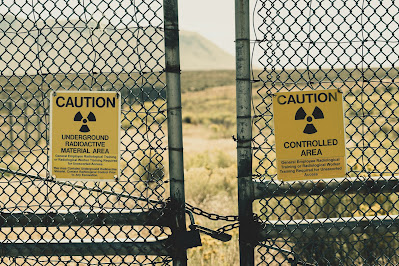Featured
- Get link
- X
- Other Apps
The first Satellite compared to the Latest
The First Satellite compared to the Latest
Sputnik 1
On October 4, 1957, the world witnessed a historic event that would forever change the course of space exploration. The Soviet Union successfully launched the first artificial satellite, Sputnik 1, into orbit around the Earth. This metallic sphere, with a diameter of 58 centimeters and a weight of 83 kilograms, marked the beginning of the space age.
Sputnik 1 was a remarkable achievement, considering the limited technology available at the time. It was equipped with a simple radio transmitter that emitted a distinctive "beep" signal, which could be heard by amateur radio operators around the world. This groundbreaking feat not only demonstrated the Soviet Union's technological prowess but also sparked a new era of scientific exploration and competition between nations.
Since the launch of Sputnik 1, satellite technology has undergone significant advancements, revolutionizing our understanding of space and enabling a wide range of applications. Let's explore the evolution of satellites, comparing the first satellite to the latest spacecraft.
### Size and Weight
Sputnik 1 was a relatively small satellite, measuring 58 centimeters in diameter and weighing 83 kilograms. However, modern satellites have grown significantly in size and weight. For instance, NASA's Cassini Saturn orbiter, launched in 1997, was about the size of a school bus, weighing a staggering 5,712 kilograms. This increase in size allows for more sophisticated instruments and larger payloads, enabling complex scientific missions.
### Functionality
While Sputnik 1 had a simple purpose of transmitting radio signals, modern satellites have evolved to perform a wide range of functions. Telecommunications satellites, such as those used for television broadcasting and internet connectivity, have become an integral part of our daily lives. Earth observation satellites provide valuable data for weather forecasting, environmental monitoring, and disaster management. Scientific research satellites, like the Hubble Space Telescope, have revolutionized our understanding of the universe. The functionality of modern satellites has expanded exponentially, contributing to various fields of study and enhancing our technological capabilities.
### Technology
Advancements in technology have been instrumental in the evolution of satellites. Propulsion systems have become more efficient, allowing for precise orbit insertion and maneuverability. Structures and materials have improved, enabling the construction of larger and more robust satellites. Hardware and electronics have become more sophisticated, facilitating advanced data processing and communication capabilities. These technological advancements have not only enhanced the performance of satellites but also reduced costs, making space exploration more accessible to a wider range of organizations.
### Number of Satellites
When Sputnik 1 was launched, it was the only artificial satellite in orbit. However, the number of satellites has grown exponentially over the years. As of 2012, there were more than a thousand active satellites orbiting the Earth. This increase is due to the growing demand for satellite-based services, including telecommunications, navigation, and Earth observation. The proliferation of satellites has led to a crowded space environment, necessitating the development of strategies to manage space debris and ensure the long-term sustainability of space activities.
In conclusion, the launch of Sputnik 1 marked the beginning of a new era in space exploration. Since then, satellites have evolved significantly, becoming larger, more capable, and more numerous. The advancements in size, functionality, technology, and the sheer number of satellites have revolutionized our understanding of space and enabled a wide range of applications. As we continue to push the boundaries of satellite technology, we can only imagine the exciting possibilities that lie ahead.
## References
1. [Sputnik 1 - NASA](https://www.nasa.gov/sites/default/files/thumbnails/image/sputnik-1.jpg)
2. [Satellite - Encyclopedia Britannica](https://www.britannica.com/technology/satellite-artificial)
3. [Sputnik 1 - History](https://www.history.com/topics/cold-war/sputnik)
4. [Satellites - European Space Agency](https://www.esa.int/Our_Activities/Telecommunications_Integrated_Applications/Satellites)
5. [Cassini-Huygens - NASA](https://solarsystem.nasa.gov/missions/cassini/overview/)
Popular Posts

Why are Memories Forgotten?
- Get link
- X
- Other Apps

How is the Colour of a Lobster Determined?
- Get link
- X
- Other Apps

Can Sound Waves Solve Plastic Pollution?
- Get link
- X
- Other Apps

Can Animals Recognise Human Faces?
- Get link
- X
- Other Apps

Do plants sleep? The surprising science of sleep in the plant kingdom
- Get link
- X
- Other Apps

Is the Earth Spinning Faster?
- Get link
- X
- Other Apps

Can Bad Times Actually Improve Your Life? Surprising Benefits of Adversity
- Get link
- X
- Other Apps

Can Brain Implants Make You More Powerful?
- Get link
- X
- Other Apps

The Future and Potential of Nuclear Batteries
- Get link
- X
- Other Apps

Music and its impact on Studying
- Get link
- X
- Other Apps
Popular Posts

Why are Memories Forgotten?
- Get link
- X
- Other Apps

How is the Colour of a Lobster Determined?
- Get link
- X
- Other Apps

Can Sound Waves Solve Plastic Pollution?
- Get link
- X
- Other Apps

Can Animals Recognise Human Faces?
- Get link
- X
- Other Apps

Comments
Post a Comment